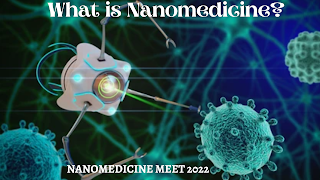Using Nanotechnology to Detect Antimicrobial Resistance?
Antimicrobial Resistance:
AMR
may be categorised as being either Associate in Nursing intrinsic prevalence or
non-inheritable outwardly. Intrinsic AMR may be represented as a phenomenon,
wherever the gram-negative microorganism demonstrates a reduced level of
permeableness of antibiotics as a result of their advanced outer layer. Non
inheritable AMR consists of deed resistance factors from already-resistant
microorganism through conjugation or thanks to body gene mutations.
Antimicrobial
resistance has become a priority for UN agency and international researchers
thanks to the negative impact this may cause to patients laid low with
infections that can't be treated thanks to multidrug resistance – this implies
the infectious agent at the basis of their infection cannot be treated effectively
by a variety of drug candidates.
Detection of AMR:
The
detection of antimicrobial resistance has become a unique, innovative
development by researchers to deal with this major health crisis moving
international human health.
Rapid
detection of AMR aims to produce essential data concerning the presence of
antimicrobial resistance in patients to forestall the improper use of
antibiotics, which might be ineffective still as stop from now on fuel to AMR
properties gift in microorganism.
While
the event of a fast detection device would be revolutionary for the advancement
against the AMR crisis, there are challenges related to current molecular
methods which will be limiting for this new venture.
Nanotechnology-Based AMR Diagnostics:
Nanotechnology
has provided the potential to develop a robust detection platform that's
sensitive and reasonable whereas conjointly providing quick results.
The
use of nanoparticles for infective agent detection has been coated in varied
studies at intervals the literature thanks to their Nano scale size of one and
a hundred nm. This key characteristic is useful in many ways. It provides
different blessings like having a high expanse to volume magnitude relation,
high reactivity, surface functionalization, which may aid with precise
targeting, and smart electrical, magnetic and optical options.
Nanosenors
that utilize nanomaterials will be helpful for this innovative detection
system, with researchers investigation nanoparticles which will endure
selective aggregation, which may be wont to establish the presence of
pathogens.
.png)


Comments
Post a Comment